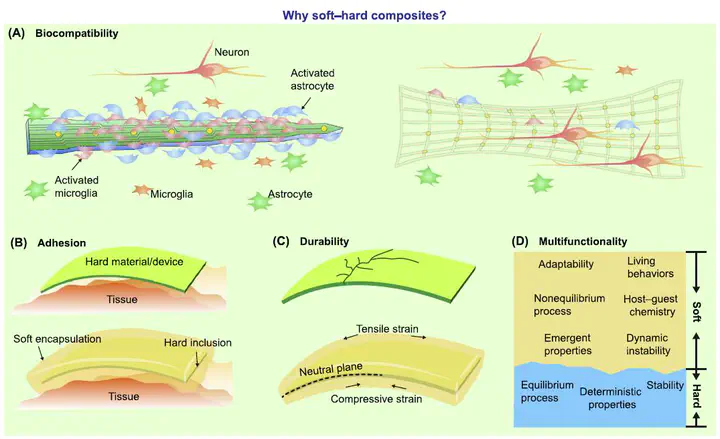
Abstract
Bioelectric devices can probe fundamental biological dynamics and improve the lives of human beings. However, direct application of traditional rigid electronics onto soft tissues can cause signal transduction and biocompatibility issues. One common mitigation strategy is the use of soft–hard composites to form more biocompatible interfaces with target cells or tissues. Here, we identify several soft–hard composite designs in naturally occurring systems. We use these designs to categorize the existing bioelectric interfaces and to suggest future opportunities. We discuss the utility of soft–hard composites for a variety of interfaces, such as in vitro and in vivo electronic or optoelectronic sensing and genetic and nongenetic modulation. We end the review by proposing new soft–hard composites for future bioelectric studies.